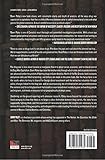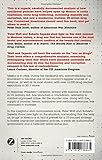The first attack came at 2:30am on January 6, 2015. Federal Police opened fire on members of the Fuerzas Rurales, who were protesting in the central square of Apatzingán, in Michoacán. The Fuerzas Rurales were born of the co-optation of part of the autodefensa movement, the armed uprising in rural Michoacan that caught the world’s attention last January. The men were protesting the fact that they hadn’t been paid.
According to a report by journalist Laura Castellanos, eyewitnesses heard a shout from the Federal Police before they opened fire: “Kill them like dogs.” An unknown number of people were killed, some with their hands up, down on their knees.
Six hours later Federal Police attacked again just down the street from City Hall, this time opening fire on trucks carrying members of the Fuerzas Rurales and their families.
An anonymously posted YouTube video shows the carnage. One man in a red-striped shirt lays face-up on the road. A pool of blood connects him with two other men. He moves his left arm as if scratching his head. The other two lay completely still. All three are on the driver’s side of a bullet-ridden white pick-up. Behind the truck lay two other men, one on his stomach, the other on his back.
Between the two attacks that day, at least sixteen people were murdered by Federal Police in Apatzingán. Dozens more were injured. In a macabre twist, two of the wounded men were dumped on the sidewalk in front of a hospital by bystanders who rescued them. Neither has been seen since.
The official version of events claimed that there were nine deaths in total, and that the killings resulted from “friendly fire” or “crossfire” between Fuerzas Rurales and police. That version held nationally for over three months, until Castellanos released her investigative piece in late April which blew through the government’s line.
Events in Apatzingán mark the third time since last June that federal forces in Mexico are known to have participated in massacres and mass disappearances.
On June 30, 2014 twenty-one men and one woman were executed by soldiers in Tlataya, a rural area in Mexico State. The local governor maintained that the army had, in “legitimate self-defense, taken down the criminals.” One witness, whose daughter was among the dead, claimed that soldiers had in fact lined up the twenty-two people killed before executing them one by one. The eyewitness said she told the soldiers not to do it, not to kill those being interrogated. Their response, she reported, was that “these dogs don’t deserve to live.”
The cover-up that ensued involved bureaucrats from various levels of government. It was only because of reporting by Esquire magazine and the work of local journalists in Mexico that the truth about what happened in Tlatlaya came out. Eight soldiers are believed to have been directly involved in the killings. Seven have been charged, three of them for murder.
The massacre in Tlatlaya was quickly overshadowed by another perpetrated by police and gunmen in Iguala, Guerrero. On the night of September 26, 2014, six people were killed, three of them students at a nearby teacher-training college. One of the young men who was killed had his face pulled off and pulled down around his neck. Others were denied medical treatment. By the next day, forty-three more students from the Raúl Isidro Burgos Rural Teachers’ College of Ayotzinapa were missing. A ll of the students were last seen as they were being arrested by municipal police, allegedly for participating in taking over buses in order to use for transportation to a march in Mexico City. The police handed the students off to a local paramilitary group, which the media dubbed Guerreros Unidos (United Warriors). The students remain disappeared.
In the words of writer John Gibler, who wrote an extensive piece about the events of September 26-27 in Iguala:
Although it was neither an isolated event nor the largest massacre in recent years, what occurred in Iguala has struck at the core of Mexican society. Perhaps it was the scale of the violence, or the sheer brutality, or that the victims were college students, or that the perpetrators were mostly municipal police, or that the mayor of Iguala, his wife, and the police chief were probably behind the attack, or that the state and federal governments were deceptive in their investigation and callous in their treatment of the mothers and fathers of the murdered, wounded, and disappeared. Whatever the cause—and it was likely a combination of all these reasons—it is impossible to overstate the effect of the attacks on the country.
Tlatlaya, Ayotzinapa, Apatzingán. Three massacres perpetrated by state forces in less than a year in Mexico. Three massacres that we know about, though there could well be more. In Tlatlaya and Apatzingán, the government claimed that that killings came in the context of an armed battle. In Iguala, they tried to claim that criminal groups had confused the students for other criminals, and suggested that the students could have been involved in criminal activity.
In Tlatlaya, Ayotzinapa and Apatzingán, because of journalists and eyewitnesses, the government line didn’t stick. But how many times has it?
There have been at least 140,000 homicides in Mexico since 2007. In December 2006, Felipe Calderón was inaugurated, he immediately went to work declaring a war on drugs and organized crime. Mexico’s national statistics agency reported over 121,000 homicides during the six years Calderón was president, which is just over twice as many as during the Presidency of Vicente Fox (2001-2006). According to a new report from the Justice in Mexico Project at the University of San Diego, “No other country in the hemisphere has seen such a large increase in the number or rate of homicides over the last decade.”
Another recent report published in American Statistician found that where there were military interventions during the drug war during Calderon’s term, there were more murders. According to the article, “the military interventions resulted in an increase in the average homicide rate” in eighteen regions of Mexico. One of the telling tidbits in the report is that there is not “a comprehensive list of interventions,” which is to say that we don’t even know about all of the military interventions that have taken place in Mexico since December 2006.
The state-perpetrated killings which have stunned Mexico have come at a time of unprecedented cooperation in military and police training between Mexico and the United States. Between 2008 and 2014, the United States trained over 22,000 federal and state police in Mexico. Washington came on board to back the drug war in Mexico and coordinate with security forces throughout the country through the Merida Initiative, on which the United States spent over $2 billion between 2008 and the end of 2014. The Intercept reported recently that five members of the batallion involved in the massacre in Tlatlaya were trained by the US Northern Command.
We are told that this training will lead to better policing, an idea with surprising credibility under the circumstances. As evidence of more state-sponsored massacres continues to surface, police across the United States have been the focus of outspoken resistance and mass protests in the wake of repeated cop killings of young (mostly) Black men. Indeed, the problem of police violence in the United States has led to increased calls to disarm and disband police and abolish prisons.
In Mexico, meanwhile, concrete experiences of community resistance to police violence and abuses have resulted in successful organizations like the Community Police in Guerrero State (CRAC-PC). They have also led to moments of organization like those which saw the creation of the autodefensa groups in Michaoacán last year—among the first actions of many of these groups was the disarming of local police, understood as prime predators on community members. Mexico’s latest police scandal—the massacre of members of the factions of the autodefensa movement who cooperated with state efforts to legalize—is a message to self-defense groups of all stripes that even cooperation does not guarantee survival.
Ongoing surges in violence attributed to drug cartels (or what are, more likely, paramilitary groups), like the shooting down of a military helicopter and dozens of fiery blockades in the state of Jalisco in early May, or ongoing events in the state of Tamaulipas, sow confusion and are used to reinforce calls for reformed and better police and military institutions as safeguards against the extreme violence of non-state actors. But there is a limit to these kinds of calls, a limit that dwells in the terror inflicted by state forces against civilians with near total impunity.
Tlatlaya, Ayotzinapa, and Apatzingán are three places whose names today conjure the most recent examples of naked state violence in Mexico. We don’t know how many more events like these have taken place over past years. The number of mass graves being discovered (again, we know about only a fraction of all of those which are found) and the amount of people who have been disappeared in Mexico since 2006 (over 27,000) indicate that these three events could represent but the tip of the iceberg of state violence in a drawn out war on the people.
Dawn Paley is the author of Drug War Capitalism. She is based in Mexico. Follow her on Twitter at @dawn_.
Photograph via the Latin America Working Group.


